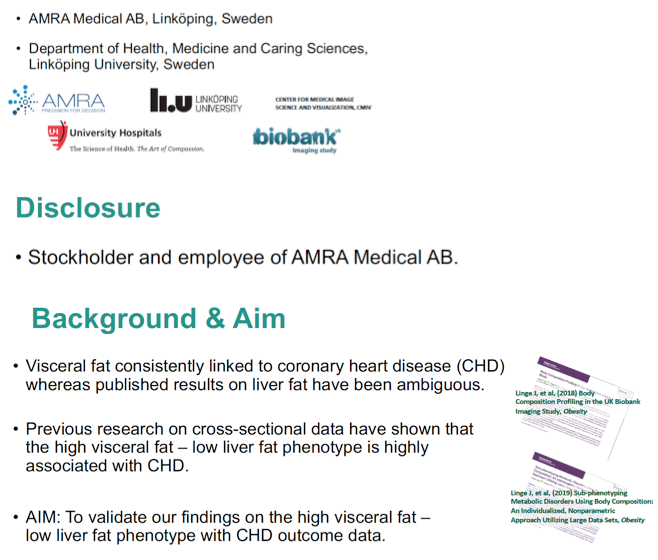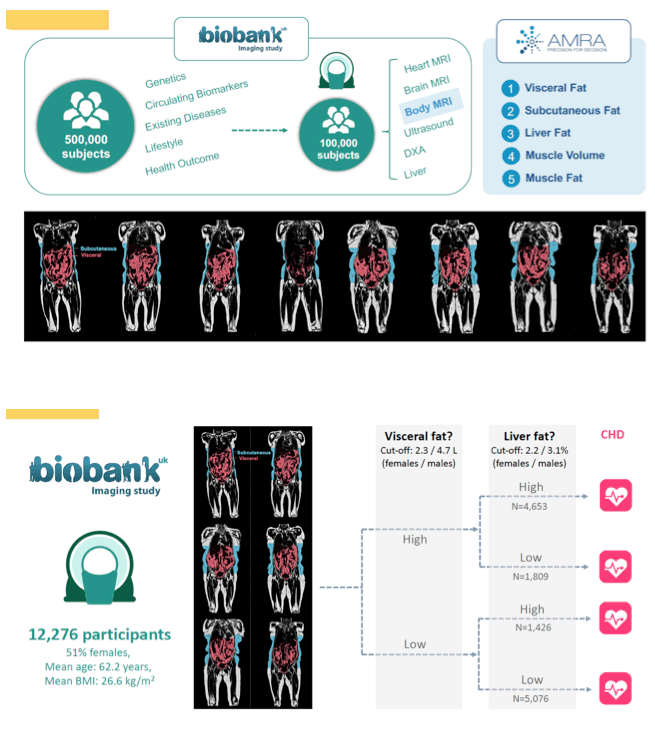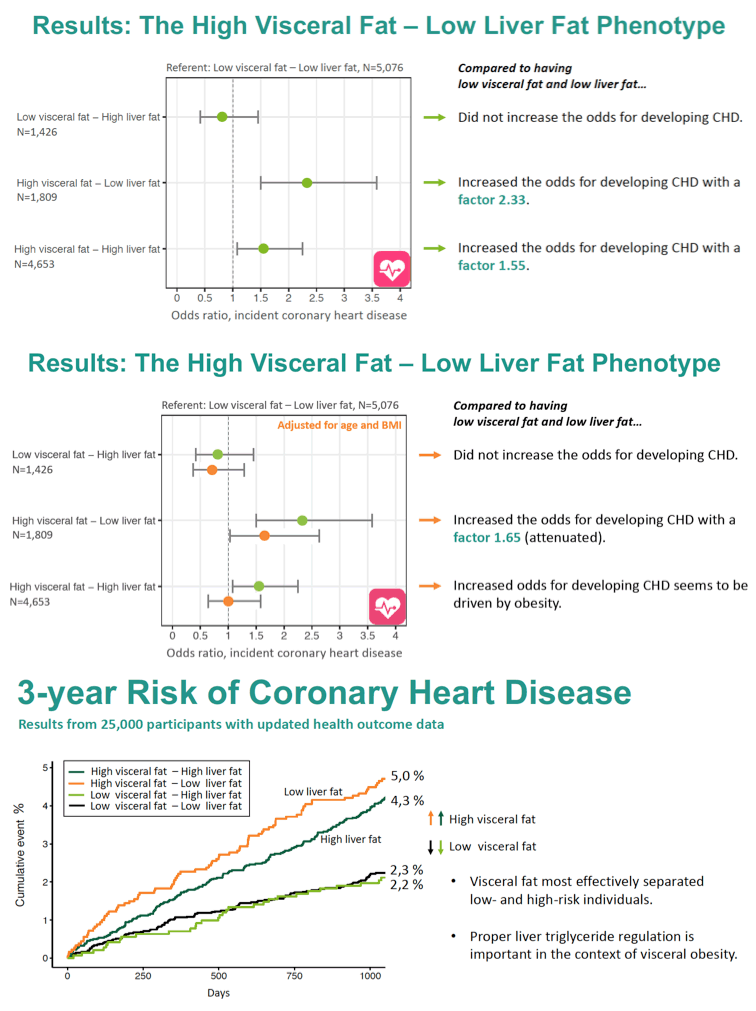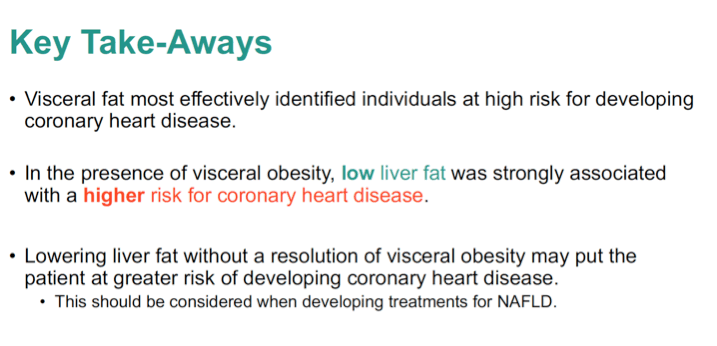 |
 |
 |
| |
Can low liver fat be bad for your heart? Visceral Fat & Heart Disease
|
| |
| |
The high visceral fat low liver fat phenotype -
A risk factor for coronary heart disease
Linge J, Petersson M, Neeland IJ, Borga M, Dahlqvist Leinhard O
AASLD 2020 Nov 11-16

Abstract
CAN LOW LIVER FAT BE BAD FOR YOUR HEART? THE HIGH VISCERAL FAT, LOW LIVER FAT PHENOTYPE - A RISK FACTOR FOR CORONARY HEART DISEASE
Jennifer Linge1,2, Mikael Petersson1, Ian Neeland3, Magnus Borga1,4 and Olof Dahlqvist Leinhard1,2, (1)Amra Medical AB, (2)Department of Medical and Health Sciences, Linkoping University, (3)Division of Cardiology, University of Texas Southwestern Medical Center, (4)Department of Biomedical Engineering, Linkoping University
Background: Elevated visceral adipose tissue (VAT) and liver fat (LF) are common in individuals with metabolic disorders such as type 2 diabetes . While excess VAT is consistently linked to cardiometabolic outcomes, associations of LF with cardiometabolic disorders remain controversial . This study aimed to investigate the risk of incident coronary heart disease (CHD) associated with discordant VAT-LF phenotypes in a large population cohort.
Methods: 12,276 individuals from the UK Biobank imaging study were scanned using a 6-minute magnetic resonance imaging (MRI) protocol . Images were analyzed for VAT and liver proton density fat fraction (LF) using AMRA Researcher (AMRA Medical AB, Sweden) . Participants were divided into four phenotype groups defined by sex-specific median values of VAT and LF: low VAT-low LF, low VAT-high LF, high VAT-low LF and high VAT-high LF . Logistic regression was used to assess associations of VAT-LF groups with incident CHD (ICD-10 codes I20-I25, Z951: ischemic heart disease or presence of aortocoronary bypass graft). Odds ratios and 95% confidence intervals were calculated with low VAT-low LF as referent. A second model was adjusted for age and body mass index (BMI) . Results with a p-value < 0.05 were considered significant.
Results: The study cohort consisted of 51% females with a mean (SD) age of 62 .6 (7 .5) years and BMI of 26 .6 (4 .4) kg/ m2 . Participants were followed for a mean (SD) of 1 .3 (0 .8) years . 176 CHD events were recorded following imaging . Sex-specific median values were for VAT 2.3 L and 4.7 L, and LF 2 .2% and 3 .1% (females and males respectively) . High VAT-low LF was most strongly associated with incident CHD with a >2-fold higher odds (Table 1). High LF in the context of low VAT was not associated with increased risk for CHD . After adjustment for age and BMI (Model 2), the association of high VAT-high LF with CHD was attenuated but the association of higher odds for CHD among those with high VAT-low LF persisted.
Conclusion: Heterogeneity of body fat distribution affects CHD risk. There is an increased risk for CHD events among those with high VAT which is enhanced in the context of low LF, indicating that liver triglyceride regulation plays an important role in cardiovascular health in the context of visceral obesity . Further investigations are needed to understand if this phenotype is an expression of an inability to handle ectopic fat deposition via the liver associated with high CHD risk, and if decreased liver fat as consequence of liver dysfunction increases the risk for CHD .



|
| |
|
 |
 |
|
|